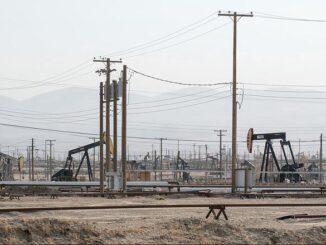The virtual world of modern services, applications, and cloud platforms seems invisible, but behind its flawless operation are huge data centers. These technological giants, which support almost every aspect of our daily lives, remain out of sight for most users. However, behind their walls lies a very real threat to nature: the enormous amounts of energy, water, and resources consumed every day for the sake of digital convenience. Can the IT industry ensure a future where sustainability is not just a slogan, but a reality?
The scale of the problem: why data centers have become an environmental challenge
The number of data centers in the world is growing rapidly, reflecting the exponential expansion of digital services. Today, they power search engines, streaming platforms, banks, and corporate clouds. According to the International Energy Agency, the total energy consumption of data centers in 2022 was estimated at 220–330 TWh, which is up to 1.5% of the world's electricity. Some regions, such as Northern Virginia, are already facing energy shortages due to the concentration of such facilities.

Most users do not notice their impact because cloud technologies seem ephemeral. But can you imagine every like or file download without the cost of electricity and cooling? Even a small improvement in efficiency can save resources comparable to the consumption of an entire city.
People who are far removed from the world of technology may think that data centers are only a small part of what can harm the environment. In fact, data centers and servers are used by virtually all large companies in the fields of medicine, entertainment, art, as well as in areas such as mechanical engineering and public safety.
However, the casino market makes the most use of data centers. This is especially true for online casinos, which need somewhere to store a lot of information about their users. The iGaming market has been growing rapidly lately, leading to the emergence of new and improved games. One example is Jet-X, an innovative game with advanced mechanics. Given the active emergence of such games and the development of the iGaming market as a whole, it becomes clear why this market uses so much data center space.
Types of impact: energy, water, waste, land
Data centers are considered to be among the most energy-intensive industrial facilities. A modern medium-capacity center can spend up to $1 million per month on electricity. Most of the costs are associated with the operation of servers, network equipment, and cooling systems, which run 24/7.
Power Usage Effectiveness (PUE) is used to measure efficiency: the ideal PUE is close to 1, but in older centers it exceeds 2. The higher the PUE, the more “excess” energy is spent on auxiliary needs, primarily cooling.
The contribution to CO2 emissions is significant: according to the U.S. Environmental Protection Agency, data centers accounted for 0.5% of U.S. greenhouse gas emissions in 2023. If the infrastructure runs on traditional energy sources, every operation in the cloud increases the industry's overall carbon footprint.
Water resources and cooling systems
Cooling servers requires a huge amount of water — a large data center can consume up to 5 million liters per day. Water systems (evaporative cooling, cooling towers) are effective but place a burden on local water supplies and ecosystems, especially in arid regions.
An alternative is air cooling, which uses external air flows or chillers. Such systems are less water-intensive but often require more energy. The choice of method depends on the climate, the availability of water resources, and the architecture of the center.
Electronic waste and soil impact
Every year, the industry generates thousands of tons of electronic waste: obsolete servers, cables, batteries, and power supplies. Improper disposal leads to heavy metals (lead, mercury) entering the soil and water, as noted by experts from the European Environment Agency.
Land use and impact on ecosystems
The construction and expansion of data centers changes the landscape—meadows disappear, concrete “islands” appear, and noise and traffic increase. Local residents are faced with new background noise, increased car traffic, and even changes in housing costs. Each new facility requires connection to infrastructure, which changes the ecosystems of the regions.
Technology and innovation: how the industry is looking for solutions
The transition to energy-efficient equipment is becoming the norm: modern ENERGY STAR-certified servers consume less electricity and automatically regulate their load. Virtualization allows for “densification” of computing—multiple virtual machines run on a single physical server. This reduces overall energy consumption and decreases the size of the center.
Free cooling (using outside air) and liquid cooling systems are gradually replacing less efficient air conditioners. Dell Technologies estimates that these approaches reduce cooling costs by up to 40%.



